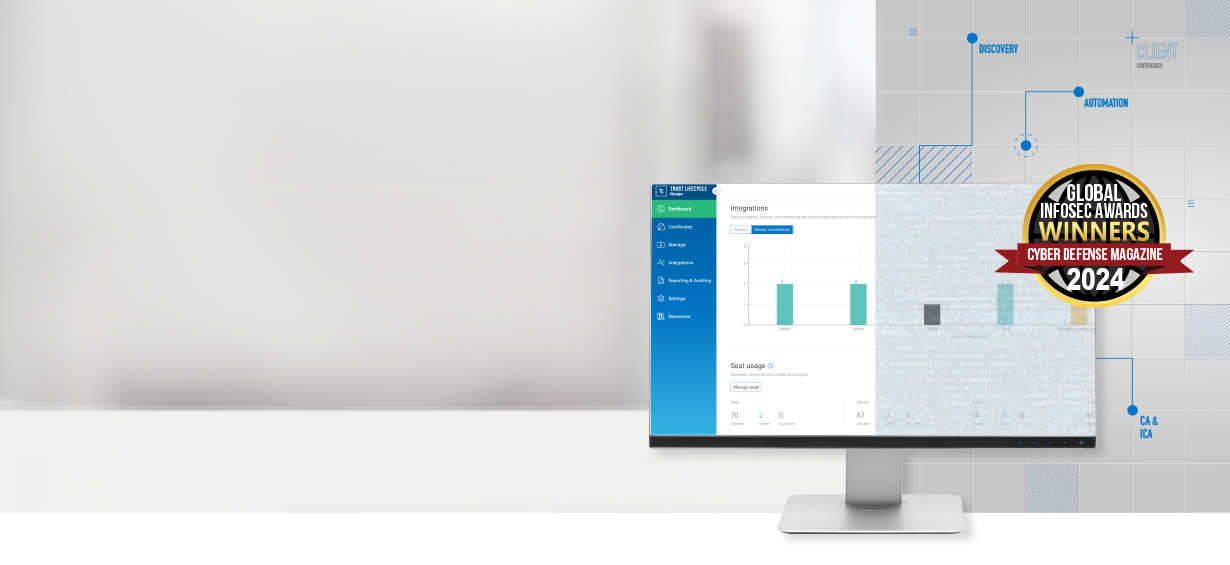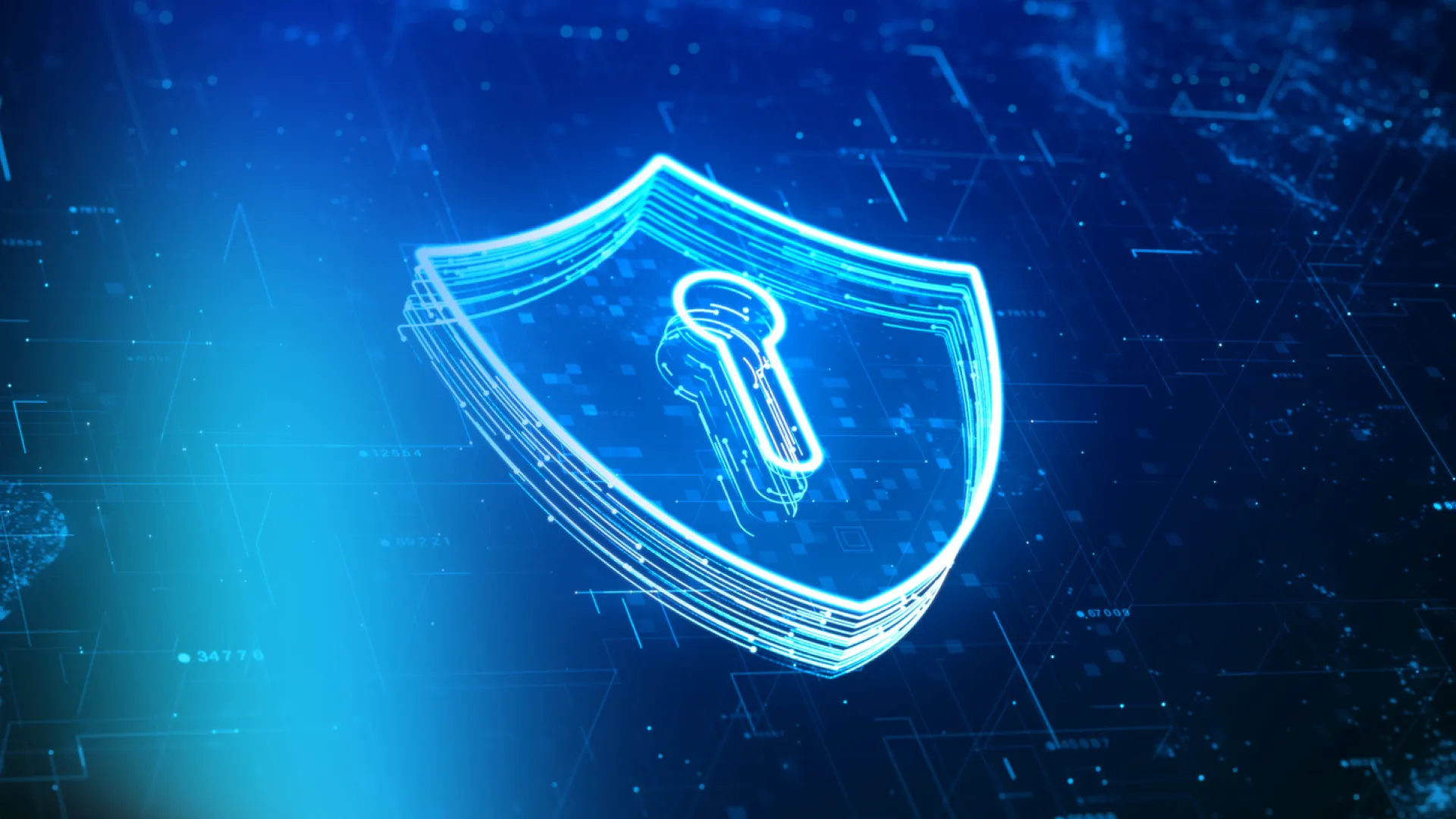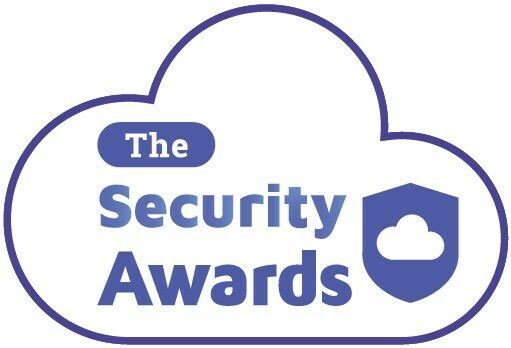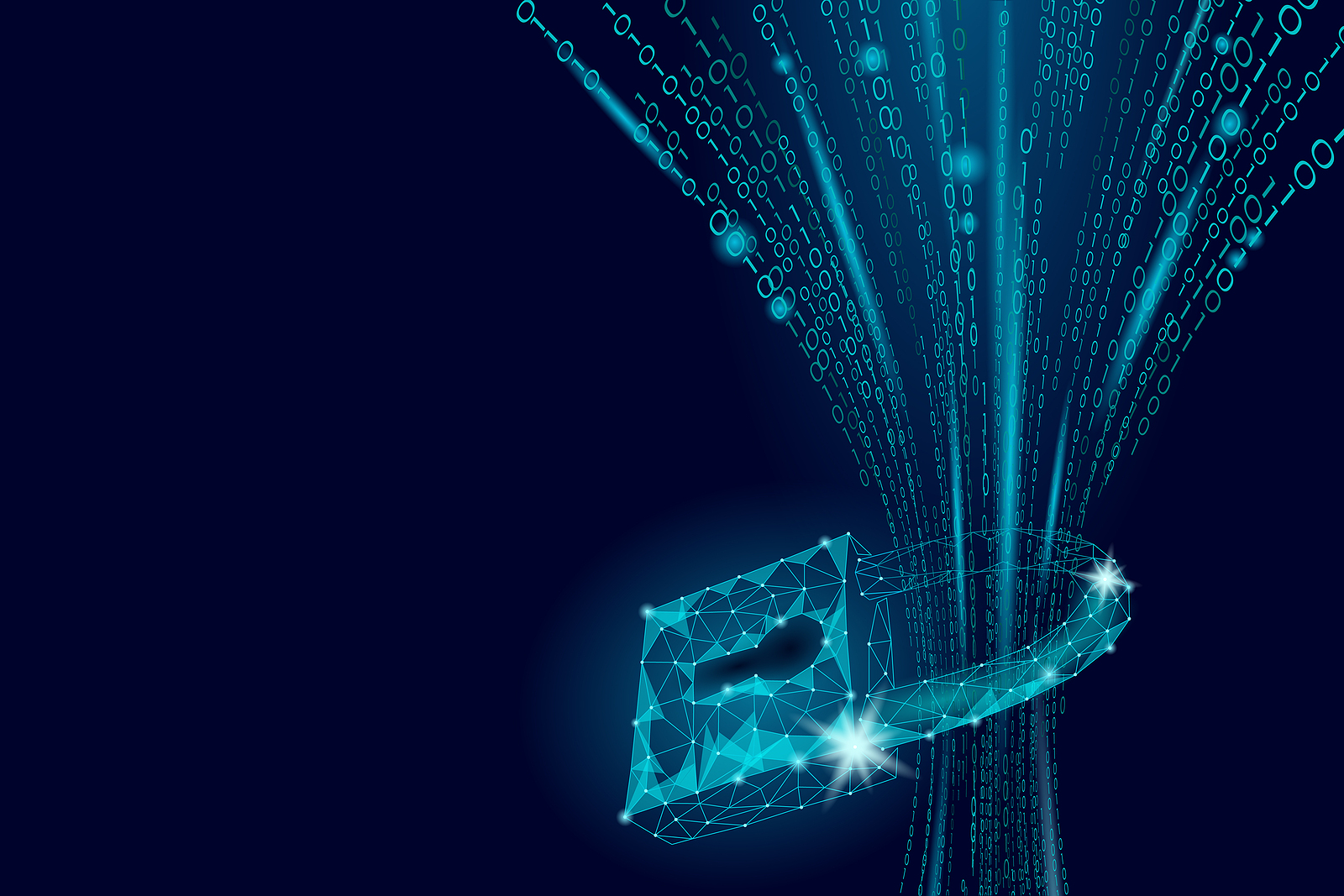Data Centre Security: Protecting Infrastructure from Physical and Cyber Threats
Data
Data Centre Security: Protecting Infrastructure from Physical and Cyber Threats
News
Acronis expands security portfolio with new XDR offering
Acronis, a global leader in cybersecurity and data protection, has introduced Acronis XDR, the newest addition to the company’s security solution portfolio.
Designed to be easy to deploy, manage, and maintain, Acronis XDR expands on the current endpoint detection and response (EDR) offering and delivers complete natively integrated, highly efficient cybersecurity with data protection, endpoint management, and automated recovery specifically built for managed service providers (MSPs).
Cyberattacks have become increasingly sophisticated due to cybercriminals deploying AI and attack surfaces expanding, allowing businesses to be more vulnerable to data breaches and malware. To protect their customers, MSPs who offer security services commonly only have a choice of complex tools with insufficient, incomplete protection that are expensive and time-consuming to deploy and maintain. As a direct response to these challenges, Acronis XDR seeks to provide complete protection without high costs and added complexity.
“Acronis makes a compelling entrance into XDR,” notes Chris Kissel, Research Vice-President at IDC. “Acronis has provided an endpoint protection platform for the better part of a year. The company has extended its XDR stack mapping alerts to Mitre Attack and offer cloud correlation detections. Importantly, its platform supports multitenancy, and the dashboard provides intuitive visualisations.”
Key features and benefits of Acronis XDR include:
• Native integration across cybersecurity, data protection, and endpoint management. The product is designed to protect vulnerable attack surfaces, enabling business continuity.• High efficiency, with the ability to easily launch, manage, scale, and deliver security services. It also includes AI-based incident analysis and single-click response for swift investigation and response.• Built for MSPs, including a single agent and console for all services, and a customisable platform to integrate additional tools into a unified technology stack.
“It is imperative that MSPs provide reliable cybersecurity to customers with diverse IT environments and constrained budgets,” says Gaidar Magdanurov, President at Acronis. “Acronis XDR enables MSPs to offer top-notch security without the complexity and significant overhead of traditional non-integrated tools. This is achieved in several ways, including AI-assisted capabilities within the Acronis solution that helps MSPs provide the utmost cybersecurity - even if an MSP only has limited cybersecurity expertise.”
Earlier this year, the company released Acronis MDR powered by Novacoast, a simple, effective, and advanced endpoint security service built for MSPs with native integration of data protection to deliver business resilience. Acronis MDR is a service offering used with the Acronis EDR solution focused on endpoint protection platform (EPP) to provide passive endpoint protection. The addition of Acronis MDR amplifies MSP’s security capabilities without the need for large security resources or added investments.
The introduction of Acronis MDR and XDR follows a string of security-related offerings and solutions from Acronis, building on the company's EDR offering released in May 2023. Acronis security solutions leverage AI-based innovations and native integrations, which lower complexity and provide complete security in the easiest and most efficient way. With a comprehensive security portfolio from Acronis, MSPs can now offer complete cybersecurity to their customers and scale operations to grow their business.
For more from Acronis, click here.
Simon Rowley - 13 June 2024
Data
Data Centre Business News and Industry Trends
Data Centre Security: Protecting Infrastructure from Physical and Cyber Threats
Data Centre Training & Certification Programs
News
Veeam launches cyber resilience education programmes
Veeam Software, a provider of data protection and ransomware recovery products, has announced that new technical training and certification programmes are available through Veeam University, a service which delivers Veeam technical training to IT professionals on-demand anytime, anywhere.
The new online offering is the result of a global partnership with Tsunati, a Veeam-accredited service partner, which is helping to provide on-demand, technical certification training for partners and customers worldwide.
Veeam University says that it offers maximum flexibility and an immersive, engaging learning experience in a self-paced format. Its approach includes clickable labs that can be accessed 24/7, video-based demos, and technical deep dives which allow students to effectively absorb concepts and prepare for real-world cybersecurity and disaster recovery scenarios. Completion of on-demand courses offered through Veeam University qualify learners for Veeam certification exams, including Veeam Certified Engineer (VMCE).
“Knowledge is critical in a world where every organisation is facing cyberthreats,” explains Mike Blanchette, Vice President, Global Sales Acceleration at Veeam. “Cyber resilience is the marriage of the right technology to protect and recover your systems and data should the worst happen, with the skills and knowledge to configure, build, and run that technology safely.
“Through these new investments in Veeam University, we are preparing people to tackle any cybersecurity challenge they face and enabling cyber resiliency. Our partnership with Tsunati enables us to provide innovative technical training and certification programmes in a flexible format that best suits the learner."
Tsunati is a professional services and integration company specialising in data protection, Cloud computing, and multi-tenant virtualisation. Recognised as Veeam Accredited Service Partner of the Year for 2022, Veeam believes that Tsunati has changed the world of product training, education and certification. Through its proprietary Solution Education Enablement (SEETM) framework, customers receive practical training and the critical knowledge transfer required to effectively implement and maintain cutting-edge data protection solutions powered by Veeam.
"We are thrilled to join forces with Veeam in revolutionising technical certification training for data protection," says Stoney Hall, CEO of Tsunati. "This partnership represents a synergy of our expertise in Solution Enablement Education (SEETM) and Veeam’s industry-leading data protection and ransomware recovery solutions. Together, we aim to empower professionals with the knowledge and skills required to navigate the evolving landscape of data security effectively."
New technical professional training for Veeam partners is available through the Veeam ProPartner portal, while newly updated customer technical education and certification programmes are available separately through Veeam Technical Education Services.
More details on Veeam University can be found at veeamuniversity.com.
For more from Veeam, click here.
Simon Rowley - 29 May 2024
Data
Data Centre Operations: Optimising Infrastructure for Performance and Reliability
Data Centre Security: Protecting Infrastructure from Physical and Cyber Threats
How the Internet of Things Is Shaping Data Centre Operations
News
DigiCert unveils Device Trust Manager for IoT security
DigiCert, a global provider of digital trust products, has announced the evolution of its IoT security platform with the launch of DigiCert Device Trust Manager, an innovation designed to safeguard IoT devices throughout the entire lifecycle.
The new Device Trust Manager addresses the critical needs of device manufacturers for an integrated and scalable solution to secure IoT devices, manage complex compliance requirements, and ensure operational and device integrity amidst growing threats targeting devices.
With the projected growth of 55.7 billion connected devices by the year 2025 - spanning consumer electronics, healthcare equipment, industrial systems, and more - the threat landscape grows more diverse and complex each day. The scale of this interconnected ecosystem also amplifies compliance issues, as organisations struggle to adhere to stringent security standards and regulations across diverse device types, environments, and borders. To effectively mitigate these risks, organisations need a comprehensive way to manage and secure the vast array of devices in various stages of the lifecycle while safeguarding data, privacy, and operational continuity in the face of evolving threats.
“With Device Trust Manager, DigiCert is reinforcing its commitment to digital trust in the rapidly expanding IoT landscape,” says Deepika Chauhan, Chief Product Officer, DigiCert. “We're excited to introduce this integrated platform to new and existing customers, transforming IoT device security with comprehensive protection throughout the device lifecycle. Device Trust Manager checks all the IoT boxes, except the one labelled 'Ship and Pray'.”
DigiCert Device Trust Manager offers unparalleled security for every stage of the IoT device lifecycle, from birth to decommission, ensuring compliance while improving operational efficiency. The solution prioritises privacy, consumer safety, and business continuity via:
• Enhanced compliance: Simplifies adherence to international regulations, supporting rigorous compliance demands with detailed SBOMs (Software Bill of Materials), real-time monitoring, and secure provisioning to maintain device integrity throughout the lifecycle• Operational efficiency: Automates security processes, enabling quicker device deployment with features like over-the-air (OTA) updates and zero-touch provisioning• Risk mitigation: Improves anomaly detection capabilities to protect against downtime and data breaches• Scalable security: Easily scales from small to large deployments, adapting to various device ecosystems.
“The latest solution from DigiCert, built upon the already impressive DigiCert One platform, shows continued innovation,” says Sam Gabbay, President, TUO Accessories. “Once again, DigiCert is leading the way by showing leadership, commitment to IoT security and especially their customer experience by thinking 10 steps ahead for them. I am proud to be a DigiCert customer and am excited to use Device Trust Manager, which shows promise to improve an already streamlined workflow.”
For more from DigiCert, click here.
Simon Rowley - 23 May 2024
Data Centre Security: Protecting Infrastructure from Physical and Cyber Threats
News
Security expertise gap to threaten cloud expansion plans
Tenable, an exposure management company, has launched its latest cloud security report, titled 2024 Cloud Security Outlook: Navigating Barriers and Setting Priorities.
The report reveals that most IT managers (97%) plan to expand their cloud environments in the next year. However, this ambition is being met with significant challenges, as 45% of those responsible for managing cloud security cite a major lack of expertise as a barrier to implementing new cloud security.
In addition to this, 33% of respondents stated that they believe one of the biggest risks to their cloud infrastructure now sits outside of the organisation in the form of third-party suppliers.
This highlights that whilst cloud adoption may be on the rise, organisations face serious security challenges from both inside and outside of their business.
Bernard Montel, EMEA Technical Director and Security Strategist, Tenable, explains, "In today's digital landscape, organisations are racing to embrace cloud technologies for their myriad benefits, yet our latest findings reveal that a staggering 97% of organisations are currently grappling with insufficient expertise in cloud infrastructure security.
“While the intention to expand cloud systems is evident among IT leaders, the alarming occurrence of breaches and the identified risks, such as third-party providers in supply chains, underscores the urgent need for organisations to prioritise investment in upskilling and resources. Addressing the clear skills gap is paramount in fortifying cloud security measures and mitigating the risks posed by an evolving threat landscape."
The report also sheds light on the prevalence of cloud-related breaches, with half (50%) of UK businesses stating that they suffered between three and four cloud-based security breaches in the last year alone.
Tenable says that this further highlights the urgent need for organisations to bolster their cloud security strategies and invest in the necessary expertise to safeguard their digital assets effectively, especially as IT managers expand their infrastructure and move more assets into cloud environments.
As businesses continue to embrace cloud technologies, Tenable remains committed to empowering them with innovative solutions and actionable insights to address the evolving challenges of cloud security.
The full Tenable Cloud Security Outlook Report 2024 can be accessed by clicking here.
Simon Rowley - 20 May 2024
Data
Data Centre Security: Protecting Infrastructure from Physical and Cyber Threats
News
VAST partners with Superna to help boost cyber resilience
VAST Data, an AI data platform company, has announced a partnership with Superna, a provider of data security and cyber storage solutions for on-premises, hybrid, and multi-cloud environments.
The integration will provide VAST customers with immutable data protection, real-time suspicious behaviour detection, automated cyber threat response, and near-instant recovery from ransomware and other disasters, bolstering cyber resilience for their enterprise data.
With ransomware payments exceeding $1.1 billion (£865m) in 2023, enterprises today require sophisticated protection embedded at the storage layer. The VAST Data Platform aligns to the NIST framework, providing a solid foundation to detect, protect against, respond to, recover from, and even prevent cyber threats entirely with active defence and powerful Zero Trust security features.
VAST’s breakthrough approach to data management and data-intensive computing serves as the comprehensive software infrastructure for AI and deep learning. As AI adoption grows, so does the challenge of managing large amounts of unstructured data. This new world, with new workloads using various data types, needs a new level of protection for cyber resilience. With its Zero Trust architecture, granular access control, multitenancy with strict isolation, and intelligent threat detection, VAST has integrated Superna Data Security Edition capabilities into the VAST Data Platform, enabling them to mitigate the risks of ransomware and other threats to AI models and application datasets.
“By combining the world’s simplest, fastest and most efficient data platform built for exabyte scale AI, with Superna’s trusted, secure data protection and recovery offerings, we’re offering a ready-made solution able to access, manage, move and protect data for the most data-intensive organisations on the planet,” says John Mao, Vice President, Technology Alliances at VAST Data. “With VAST and Superna, customers get robust, federated cyber defence and resilience at the data layer. ”
Together, VAST Data and Superna provide organisations worldwide with:
• Ransomware detection at the data layer. The VAST and Superna partnership seeks to redefine ransomware protection with proprietary algorithms and multi-layer defence that analyses data and user behaviour in real-time. Proactive threat detection protects against and halts known and emerging ransomware threats before they breach data defenses, significantly boosting cybersecurity resilience by dismantling dangers at their very origin.
• Improved business continuity. With this comprehensive security offering, organisations can significantly reduce the risk of data breaches while still capturing immutable snapshots for immediate, automatic recovery of the last-known clean data set. Superna Disaster Recovery Edition mitigates the impact of attacks, facilitating uninterrupted business operations and AI deployments by safeguarding customers’ mission critical data.
• Streamlined disaster recovery and global replication. With VAST and Superna, customers can replicate entire systems, jobs and policies to another cluster with Tenant-Aware Replication and Intelligent Configuration Replication under every protected path.
• Robust Migration with Heterogeneous Environments. As many organisations undertake initiatives like moving to a preferred cloud, repatriation, and diversification of storage (intentional or not), the ability to provide a consistent approach everywhere is essential. Superna facilitates flexible data migration from supported storage platforms to VAST, allowing customers to easily re-platform their data and services.
• Seamless integration with leading security tools. The VAST Data Platform intelligently integrates the Superna Data Security Edition into existing security tools, enhancing defense posture without disrupting workflows or processes. By keeping security and operations teams on high alert with comprehensive reports on the scope of an attack, VAST and Superna are empowering these teams to mitigate threats and accelerate recoveries.
Superna bundled with VAST is available to partners via ARROW.
For more from VAST Data, click here.
Simon Rowley - 20 May 2024
Data
Data Centre Security: Protecting Infrastructure from Physical and Cyber Threats
News
Keepit crowned a winner in 2024 Cloud Security Awards
Keepit, a provider of SaaS data protection solutions, achieved success in the 2024 Cloud Security Awards programme by being named a winner in the 'Best Security Solution for Data Management / Data Protection' category.
Now in its second year and with an expanded range of categories, The Cloud Security Awards programme celebrates the pivotal innovations in cloud-based security solutions from around the globe. In addition to the aforementioned success, Keepit was also a finalist in the 'Best in Information Security' category.
Speaking on the company's success, James Williams, CEO of The Cloud Awards, comments, “Keepit has successfully navigated all three rounds of judging during a rigorous selection process, impressing the judges with their innovation and commitment to keeping data and other assets safe, secure, and private. We look on with interest to see what Keepit has in store for its customers throughout the rest of 2024, and beyond. Many congratulations to them, and our other winners.”
Michele Hayes, CMO at Keepit, adds, “Keepit supports customers around the globe by future-proofing their security strategies. This accolade underscores our commitment to innovation, security and reliability, and further positions the company as a leader in the cybersecurity industry.”
Built for the cloud, the Keepit platform is designed for usability, security and scalability. With a user-friendly interface, robust data security, and the ability to adapt to the user's cloud environment, Keepit ensures the user's data is always accessible and protected.
The Cloud Awards is an international programme which has been recognising and honouring industry leaders, innovators and organisational transformation in cloud computing since 2011. The Cloud Awards comprises five awards programmes, each uniquely celebrating success across cloud computing, software-as-a-service (SaaS), cloud security, artificial intelligence (AI), and financial technologies (FinTech).
Winners are selected by a judging panel of international industry experts. For more information about the Cloud Awards, click here.
For more from Keepit, click here.
Simon Rowley - 13 May 2024
Data Centre Security: Protecting Infrastructure from Physical and Cyber Threats
Data Centres
News
3D LiDAR set to redefine data centre security
Enhancing physical security, especially perimeter intrusion detection (PID) at critical infrastructure sites like data centres, warehouses, airports and utilities, is increasingly crucial due to growing threats such as theft, protests, sabotage, terrorism and war.
In its latest whitepaper, Quanergy 3D LiDAR Solutions Redefining the Physical Security of Critical Infrastructure, global technology intelligence firm ABI Research forecasts the worldwide physical security market for LiDAR sensors will surpass three million total installations by 2030, with water infrastructure leading the segment. The yearly revenue opportunity will exceed $6 billion (£4.8bn) in 2030.
“Physical security, specifically PID, encompasses controlling access for both individuals and vehicles into secured areas, as well as preventing objects from being thrown or passed across perimeter boundaries. Moreover, physical breaches often precede cyberattacks, underscoring the importance of intrusion detection in combating cyberthreats,” explains Dominique Bonte, Vice President, End Markets, at ABI Research.
Current security offerings rely on cameras and/or radar struggle to effectively detect and track intruders, and produce numerous false alerts, leading to higher operating costs and alarm fatigue. ABI Research states that these legacy 2D technologies lack accuracy and perform poorly in low light and adverse weather conditions, resulting in missed events, increased liabilities, and high cost of ownership.
According to Dominique, “3D LiDAR offers robust, reliable, and high-precision detection and tracking employing mesh architecture at an overall lower total cost of ownership (TCO), allowing security personnel and critical infrastructure to increase the effectiveness, while reducing the cost associated with manned guard services.”
The whitepaper explores: a comparison of physical security technologies; key critical infrastructure markets; LiDAR case studies for physical security segments; physical security LiDAR market sizing and forecasts; and Quanergy LiDAR solutions for physical security
ABI Research believes that 3D LiDAR solutions will have a transformational impact on the physical security market, redefining how to protect vulnerable critical infrastructure.
“The unique characteristics of LiDAR in terms of detection accuracy and reliability, range and field of view, continuous tracking, ease of deployment, and privacy preservation make it the technology of choice for next-generation physical security solutions to protect a wide range of mission-critical assets in the utility, data centre, airport, and other critical infrastructure segments,” Dominique concludes.
For more information on how 3D LiDAR can take physical security of critical infrastructure to the next level, download the whitepaper by clicking here.
Simon Rowley - 1 May 2024
Cyber Security Insights for Resilient Digital Defence
Data Centre Security: Protecting Infrastructure from Physical and Cyber Threats
News
Infinidat innovation recognised for its cyber security credentials
Infinidat, a provider of enterprise storage innovations, has announced that its InfiniBox SSA II has been recognised by analyst firm, DCIG, as one of the world’s top cyber secure all-flash arrays (AFA) for enterprise storage.
This high ranking, which was revealed in the 2024-25 DCIG Top 5 Cyber Secure High-End All Flash Arrays Report, is based on independent research that DCIG conducted into the AFA marketplace, with an expanded focus on cyber storage resilience and recovery.
“The recognition of the InfiniBox SSA II as one of the top five cyber secure AFAs in the world validates that not only is Infinidat’s primary storage solution the fastest all-flash array with industry-leading ultra-low latency, but also an industry acclaimed solution for cyber resilient storage,” says Eric Herzog, CMO at Infinidat. “Ever since we delivered the ground-breaking capabilities of InfiniBox SSA with our InfiniSafe cyber storage software and our InfiniVerse platform, Infinidat has redefined cyber resilience and recovery for enterprise storage. With an unprecedented guarantee, our InfiniBox SSA II ensures that enterprises and service providers recover and restore data at near-instantaneous speed after a cyberattack, significantly reducing the impact of ransomware and malware and saving companies time and money.”
Cyber resilience is among the most important and highly demanded requirements of enterprises today to ensure exceptional cyber security and resist cyber attacks across the entire storage estate and data infrastructure. Infinidat’s InfiniSafe cyber secure capabilities in the InfiniBox SSA II innovation combines immutable snapshots of data, logical air gapping, a fenced forensic environment, cyber detection, and virtually instantaneous data recovery, which clocks in at less than one minute, guaranteed. Infinidat leverages artificial intelligence (AI) / machine learning (ML) to provide deep content-level scanning to identify compromised data. The InfiniBox SSA II creates a private network that is isolated for data validation, facilitating the critical step of identifying a clean copy of data for reliable, rapid recovery.
"Having a cyber secure all-flash array is a necessity for enterprises to protect data from cyber attackers and ensure the security of the entire storage infrastructure, as well as to maximise business benefits by automating and consolidating workloads onto a higher-performance all-flash platform," said Dave Raffo, Consulting Analyst at DCIG. "A legacy all-flash array without cyber security capabilities built into it is already outdated and a potential huge liability in today's world of continuous cyberattacks. Our list of the top five Cyber Secure High-End All Flash Arrays constitutes the future of enterprise storage. The InfiniBox SSA II has earned a top spot because of advanced cyber resilience features on its platform, coupled with the performance, scalability, 100% availability, and cost-effectiveness that enterprises need."
The InfiniBox SSA II is Infinidat's high-performance, all-flash array aimed at mission-critical workloads that demand the ultimate in real-world application performance. It is integrated with the InfiniVerse platform, which accelerates Artificial Intelligence for IT Operations (AIOps) to automate and streamline storage management, utilises AI-based predictive analytics, and enables easier management of hybrid cloud storage implementations.
In addition to creating a cyber secure enterprise storage infrastructure that is efficient and dynamic, the InfiniBox SSA II allows customers to not only have optimal application and workload performance, but also allow for substantial storage consolidation, transforming storage performance, providing superior reliability, and reducing CAPEX and OPEX. The SSA II delivers the same 100% availability, white glove service, and lower total cost of ownership that defines the industry acclaimed InfiniBox customer experience, the company states.
To read the DCIG report, click here.
For more from Infinidat, click here.
Simon Rowley - 25 April 2024
Cyber Security Insights for Resilient Digital Defence
Data Centre Security: Protecting Infrastructure from Physical and Cyber Threats
News
Storage must form the core of an enterprise cyber security strategy
By James ‘JT’ Lewis, Director of Channel Sales for EMEA and APJ at Infinidat
It’s no wonder that in PwC’s 24th Annual Global CEO Survey, leaders ranked cyber attacks second place amongst the most serious of all possible economic, social, political, business, and environmental threats. Ransomware attacks represented 12% of breaches of critical infrastructure in the last year.
Cyber security experts have estimated that global cyber crime costs will exceed 7.5 trillion Euros this year, according to CyberSecurity Ventures. Enterprises run on data and when it’s hacked or corrupted by cyber criminals, the disruption can topple an operation overnight, with multi-million Euro consequences.
The irony is that, if the fallout from a cyber attack happened that quickly, it may be less problematic to recover from. Remedial action should be started immediately and any damage minimised. The actual problem is much more insidious because when cyber attackers target an enterprise, they usually wait for almost six months before taking action. This increases their ransom power and without the right data controls, the victim’s only option may be to concede to whatever financial demands are being made. In that timeframe, their primary data, the live data your business operations depend on, could have been exposed to all kinds of criminal activity.
For this reason, enterprise storage has become a main target of cyber criminals for the most damaging and hard-to-detect ransomware and malware attacks. One reason why enterprises still get trapped is because a cyber security strategy tends to focus on keeping criminals out in the first place, rather than accepting that attacks will most likely happen and there is an impetus for having a watertight strategy. The wolf will definitely keep knocking and will get inside your house. So, what steps can you take?
Firstly, cyber security’s emphasis must widen, to address three areas - detection, resilience and recovery - and plug the vulnerability gap that cyber criminals have been exploiting. Combining resilience, which is the ability to instil defensive security measures to repel attacks; detection, which is the ability to know when data is corrupted and whether a known good copy of data is free of ransomware or malware; and recovery, which is the ability to bounce back and recovery with a known good copy of the data from cyber attacks, is the key to hardening storage infrastructure.
Converging cyber resilience, detection, and recovery on an integrated enterprise storage platform is an advancement over former siloed approaches that rely on disparate tools and technologies. It makes the cyber capabilities more air-tight and ensures a rapid recovery of data within minutes to thwart cyber criminals, nullifying ransom demands and minimising downtime or damage to the business.
There are some key features of enterprise storage that need to be in place to ensure cyber resilience against today’s cyber criminals, all of whom are highly skilled technology experts. These include ensuring the immutable nature of the data, recovered from a copy you can trust. Air-gapping to separate the management and data planes to protect the data. A secure forensic environment, to analyse the data thoroughly and ensure the fastest recovery speeds possible is critical.
Immutable snapshots allow the end user to roll back the clock and recover guaranteed, uncorrupted copies of their data, before the execution of any malware or ransomware code introduced by an attacker. Immutable snapshots ensure data integrity because they prevent data copies from being altered or deleted by anyone. Even internal systems administrators are locked out of immutable snapshots manipulation. The enterprise can be confident that any disruption or damage caused by the intrusion is minimal.
Logical air gapping adds a further layer of security, by creating a safe distance between the storage management layer and the immutable snapshots. There are three types of air gapping. Local air gapping keeps the data on premises, remote air gapping makes use of a remotely hosted system and hybrid air gapping combines the two.
Fenced forensic environments help speed up the recovery process by providing a secure area to perform a post-attack forensic analysis of the immutable snapshots. The purpose here is to carefully curate data candidates and find a known good copy. The last thing an enterprise wants after an attack is to restore data infiltrated with malware or ransomware.
Once these core elements are present within your storage infrastructure, the whole restoration can progress like clockwork. It’s why our focus as an organisation is dedicated to educating IT leaders about the need for a convergent, tripartite approach. One that combining cyber resilience, detection, and recovery on a single storage platform. Reliance solely on backups and preventing attacks is no longer enough to secure storage systems.
Isha Jain - 2 April 2024
Data Centre Security: Protecting Infrastructure from Physical and Cyber Threats
News
iC Consult announces partnership with Transmit Security
iC Consult, an independent consultancy, systems integrator, and managed services provider for identity-driven cyber security, has announced a ground-breaking partnership with Transmit Security, the innovator of identity verification and fraud prevention services, including market-leading orchestration, phishing-resistant authentication with true password-less MFA, passkeys and modern customer identity and access management (CIAM).
This partnership marks a significant milestone in the pursuit of enhanced cyber security measures and fraud prevention capabilities and is set to offer businesses robust, frictionless authentication experiences that exceed current compliance and security requirements.
Transmit Security has been recognised for its commitment to revolutionising the customer authentication process, eliminating the need for passwords, and thereby, significantly reducing the risk of fraud. The decision to partner with iC Consult stems from its unparalleled expertise in IAM solutions, global footprint in delivering cyber security solutions, and a shared vision for delivering superior cyber security solutions that cater to the evolving needs of businesses worldwide.
Transmit Security’s VP & GM EMEA, Phil Allen highlights, "iC Consult’s global reach and innovative approach to identity management programs make them the ideal partner to advance our shared goal of making digital interactions safer and more user-friendly."
Kaltrina Ademi, Director of Channel Sales EMEA, adds, "Partnering with iC Consult was a natural choice for us. Their expertise in IAM and commitment to excellence complement our mission to secure digital identities across the globe."
Andre Priebe, Chief Technology Officer at iC Consult, shares, "Transmit Security’s password-less technology is a game-changer for our clients, addressing the urgent need for more robust cyber security measures in today’s digital landscape."
Heiko Klarl, Chief Marketing and Sales Officer at iC Consult, remarks, "This partnership enhances our ability to deliver cutting-edge solutions that effectively combat cyber security threats and fraud, marking a significant step forward in our mission to protect digital identities."
Isha Jain - 25 March 2024

Head office & Accounts:
Suite 14, 6-8 Revenge Road, Lordswood
Kent ME5 8UD
T: +44 (0)1634 673163
F: +44 (0)1634 673173









